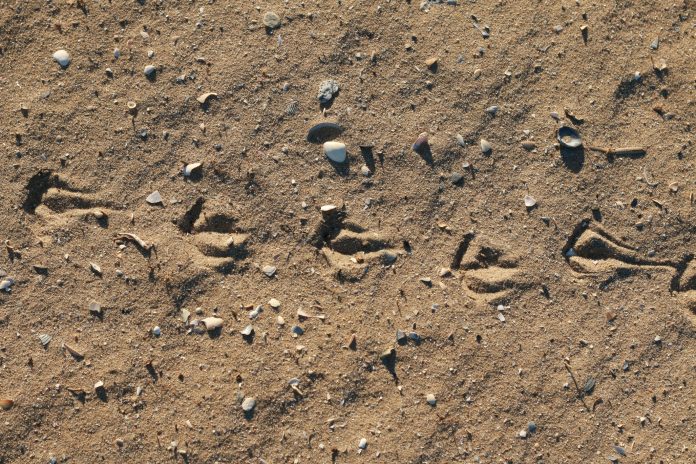The discovery of 27 avian footprints along the southern coast of Australia, originating from the Early Cretaceous period when Australia was linked to Antarctica, provides a new perspective on the early evolution of birds and potential migratory patterns
The findings, documented in PLOS ONE, present some of the earliest definitively identified bird tracks in the Southern Hemisphere, dating back approximately 120 million to 128 million years.
Ancient avian tracks: Understanding the evolution of birds
“Most of the bird tracks and body fossils dating as far back as the Early Cretaceous are from the Northern Hemisphere, particularly from Asia,” says Anthony Martin, first author of the study and a professor in Emory University’s Department of Environmental Sciences.
“Our discovery shows that there were many birds, and a variety of them, near the South Pole about 125 million years ago.”
Martin specialises in iconology, which examines life traces like tracks, burrows, nests, and tooth marks. The collaborative team of authors comprises researchers from Monash University, the Museums Victoria Research Institute in Australia, the Benemérita Normal School of Coahuila in Mexico, and the Smithsonian Institution.
Geological context of the findings
The 27 avian footprints exhibit diverse shapes and sizes, ranking among the largest identified from the Early Cretaceous period. Ranging from seven to 14 centimetres in width, these dimensions closely resemble the tracks of contemporary shorebirds like small herons and oystercatchers.
Discovered in the Wonthaggi Formation south of Melbourne, these tracks are embedded in rocky coastal strata, marking the geological transition when the ancient supercontinent Gondwana started to fragment approximately 100 million years ago. This fragmentation led to the separation of Australia from Antarctica.
Rare Bird fossils in Wonthaggi
During this era, the polar environment was characterised by a rift valley with braided rivers. Despite the Cretaceous period having a higher mean annual air temperature than the present, the polar winters featured deep freezing temperatures and extended periods of darkness in the ecosystem.
The avian tracks in the Wonthaggi Formation are distributed across several stratigraphic levels, signifying a repeated presence of diverse bird species. This observation hints at the possibility of the tracks forming seasonally, likely during polar summers and potentially along a migratory route.
The Wonthaggi Formation is renowned for its assortment of polar dinosaur remains, with exceptionally scarce bird fossils. Within the Cretaceous strata of this formation, only a solitary tiny bird bone, specifically a wishbone, along with a handful of feathers, has been unearthed.
“Birds have such thin and tiny bones,” Martin says. “Think of the likelihood of a sparrow being preserved in the geologic record as opposed to an elephant.”
Avian identification through track features
Birds, being lightweight, tend to leave minimal foot impressions. In 2013, Martin and colleagues found two 105-million-year-old bird tracks in Australia’s Eumeralla Formation, marking them as the oldest from Australia.
Melissa Lowery, a volunteer fossil hunter and co-author, initially identified some of the tracks in the recent discovery in 2020. Many tracks were only visible during low tide, and some were covered with marine life like algae, barnacles, and molluscs.
Challenges and insights from fieldwork
Due to COVID-19 travel restrictions in Australia, Martin had to wait until 2022 to lead the track analyses on-site. He was joined by co-authors Patricia Vickers-Rich and Thomas Rich, experts in palaeontology and vertebrate palaeontology, respectively. The couple has been actively involved in fossil exploration and interpreting Gondwana’s biota since the 1970s in the Australian state of Victoria.
Field analyses were also supported by co-authors Mike Hall, a geologist at Monash University, and Peter Swinkels, a taxidermist at Museums Victoria Research Institute specialising in preserving specimens through mouldings and casts.
Martin confirmed the avian identity of the tracks by examining the thinness of the toes about the track lengths, the broad angles between the toes, and the presence of slender, sharp claws and rear toes in some of the tracks.











